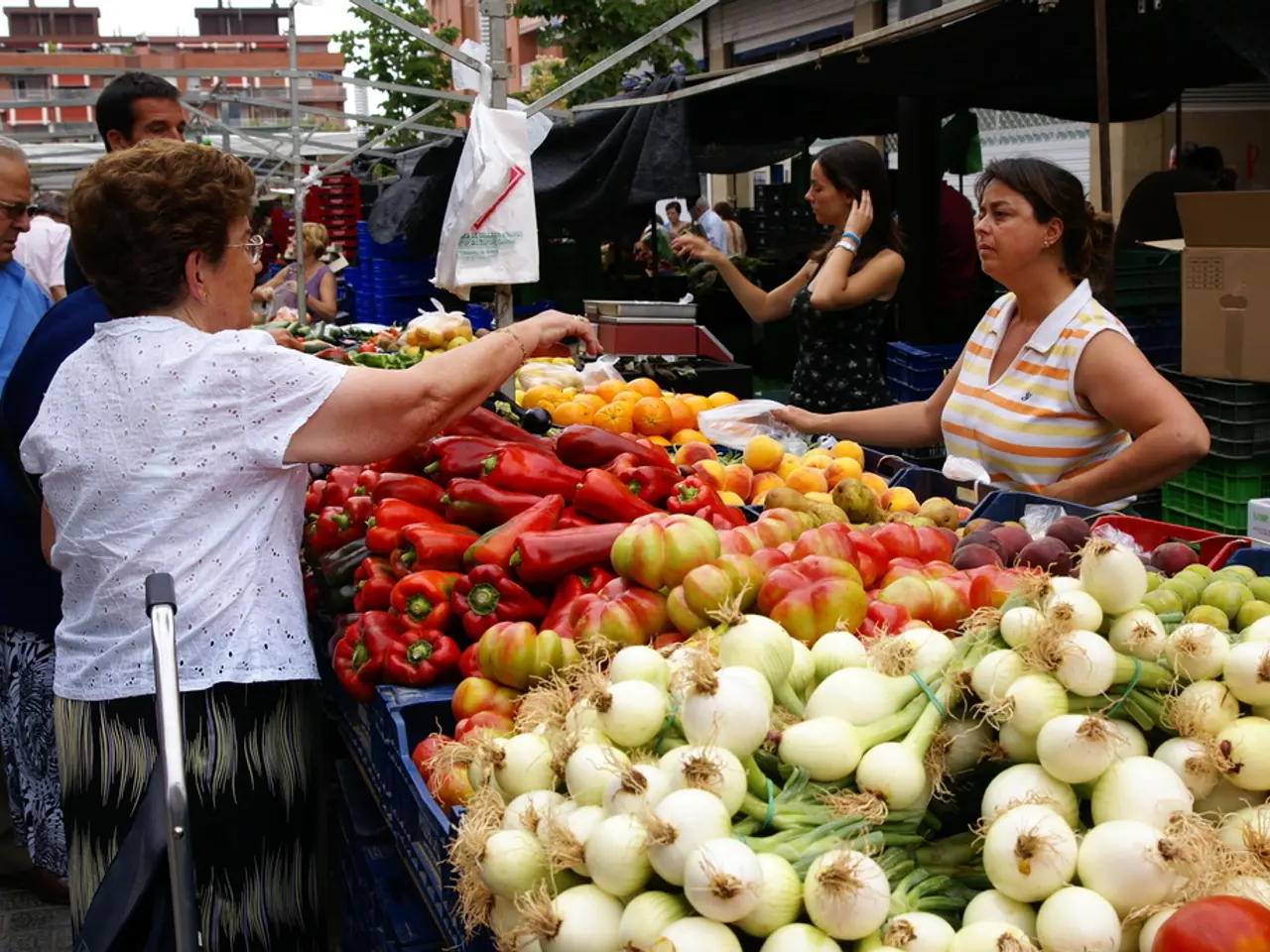Guidelines for Procuring Funds in 2025: A Discussion with Dr. David Buckeridge
In the year 2021, also known as "the year of ESG investing," a significant surge was observed in investments in the alt meat, indoor agriculture, and other food- and farming-related industries [1]. This increase was driven by several critical factors, such as escalating climate change concerns disrupting global food systems, rising consumer demand for sustainable and transparent sourcing, the financial sector's recognition of agriculture as a key area for sustainable returns and inflation protection, and growing government and corporate commitments to regenerative agriculture and lower-emission food production methods [1][3][4].
The National Institute of Agricultural Botany's Chair, Dr. David Buckeridge, explains that good old-fashioned FOMO played a role in the hype surrounding 2021 investments [2]. However, despite these accelerations, some overlooked details or mistakes were made.
One such issue was information asymmetry and product homogeneity. Consumers faced uncertainty and perceived risks due to insufficient or inconsistent ESG-related information in the market, limiting green food purchase uptake despite growing ESG communication efforts [4]. Additionally, ongoing issues like deforestation and social risks persisted in supply chains, suggesting that some corporate ESG pledges had yet to fully resolve systemic sustainability barriers [3].
The rapid scaling of green technologies such as cultivated meats was still nascent, with risks around technology maturity, production costs, and acceptance needing more time and support [1]. In the U.S., reduced federal investment in AgTech and inconsistent regulatory environments potentially slowed innovation translation and scale-up, impacting the pace of ESG progress in agriculture [5].
Startups play a crucial role in this sector. They should aim to add value to investors' capital and have a clear vision of where they are heading. Technology has to work and be durable, often in field conditions, according to Dr. Buckeridge. Some investors overestimated agrifood technologies' abilities early on, and based investments on partially or entirely novel go-to-market strategies.
Large investment funds with a proven track record in agtech may not be suitable for early-stage startups with smaller funding needs. The value proposition to the planet has often exceeded the value proposition to the customer in agrifoodtech investments, according to Dr. Buckeridge.
Startups seeking capital should start the fundraising process early to take advantage of opportunities. A pitch deck should be clear, concise, and convey the value proposition and USP. Thoroughly researching potential investors is crucial to pitching to those who are likely to be interested.
Dr. Buckeridge will host a series of investment pitches at the Focus on Finance event hosted by Agri-Tech-E in Cambridge, UK on September 11, 2025. He notes that there was a big drive on the ESG agenda to see institutional capital go to sustainable uses in 2021. However, he cautions against being "overly skeptical" about agrifoodtech moving forward, as these investments were made from pools of capital designated to achieve high returns, and with this comes risk.
Advisors can be beneficial during the fundraising process, especially for handling details where the startup may lack experience. Startups must remember that technology has to work reliably in the field, and the value proposition to the customer is just as important as the value proposition to the planet.
References:
[1] Goodwin, A. (2021). The Future of Food: How ESG Investing is Shaping the Food and Agriculture Industries. Forbes.
[2] Agri-TechE. (2021). Dr. David Buckeridge to host investment pitches at Focus on Finance 2025. Agri-TechE.
[3] Kim, J. (2021). The State of Sustainable Agriculture: Challenges and Opportunities in 2021. Triple Pundit.
[4] KPMG. (2021). The ESG Agenda: The Future of Food and Agriculture. KPMG.
[5] USDA. (2021). AgTech Investment: Opportunities and Challenges. USDA.
In the context of the 2021 ESG investing surge, some investors overestimated the maturity and market-readiness of agrifood technologies, basing their investments on unproven go-to-market strategies (finance, investing, business). As Dr. Buckeridge notes, startups seeking capital should have a clear vision and ensure that technology works reliably in the field, addressing both the customer's needs and the planet's (finance, investing, business).




